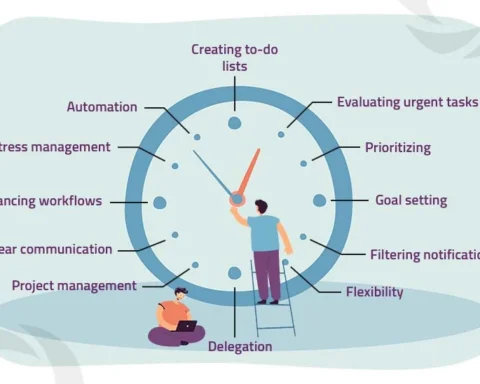If you are looking to attain mastery over software programming, then you have your work cut out for you. Solid programming skills demand strong problem-solving, critical thinking, and mathematical abilities. You need to cultivate your algorithmic thinking abilities and keep them sharpened with loads of studying & routine practice. Practice and hard work are obviously the keys to success, but you also need to level up your conceptual ideas and knowledge.
This article comes to you as a lucid guide to two of the most vital concepts in programming – data structures & algorithms. It comes to you straight from professional programming assignment help experts, so get ready for some valuable insights.
The Most Commonly Employed Data Structures
Data structures are abstract constructs for storing & organizing data and are fundamental to coding & software engineering. Online assignment experts of MyAssignmentHelp, the USA’s largest programming assignment help service, list the following as the most common & prominent among them all.
Arrays
The simplest and most heavily used data structure, arrays store data contiguously and are linear data structures. They have indices, which are pointers that point to a specific element/position in an array. The index of an array generally starts from 0. Arrays can be one-dimensional, multi-dimensional, static, or dynamic.
Stacks & Queues
Stacks and queues are linear data structures that follow the LIFO & FIFO paradigms. The LIFO (Last In, First Out) constraint ensures that the last element is the first to get out of a stack. FIFO (First In, First Out) allows only the first element in a queue to exist firsts. From web browsers to desktop publishing apps, both stacks and queues have numerous applications.
Linked Lists
Another type of linear data structure, linked lists, store data non-contiguously. Each element in a linked list is a node that stores data as well as points to the next node. Chains of nodes comprise a linked list and find applications in file systems, hash tables, etc.
Trees
Trees are non-linear, hierarchical, and acyclic in nature. Every node in a tree is known as a vertex with the first vertex being called the root. Vertices are connected to each other via branches or edges. The very nature of trees makes them very useful for storing information about data dependencies, inferences, and the like. You will use trees extensively when coding in machine and deep learning.
Graphs
Another type of non-linear & non-contiguous data structure, a graph, is somewhat related to trees, but there are prominent differences. Graphs are cyclic, do not have any root node, and are non-hierarchical. Also, unlike trees, graph traversal is not easy and requires application-specific algorithms.
Hash Tables
Hash tables are used in hashing, a highly efficient procedure for storage & retrieval of data. Data is stored in the form of key-value pairs, where keys are calculated using a special procedure called the hash function. Hash tables are generally crafted using dynamic arrays.
Well, those were some of the most commonly used data structures in software engineering, network programming, and competitive coding. Let’s now take a look at a bunch of handy and powerful algorithms used across computer science.
Common Algorithms Across Computer Science
| Sorting | Bubble, Selection, Insertion, Selection, Quick, Merge, Heap |
| Searching | Linear, Binary, Exponential, Jump, Ternary, Interpolation |
| Greedy Algorithms | Algorithms that prioritize short-term benefits over long-term consequences (selection sort, minimum spanning tree, Dijkstra’s, Huffman Coding, etc.) |
| Divide-and-Conquer Algorithms | Breaks down a larger problem into sub-parts(merge sort, quick sort, binary search, convex hull) |
| Graph Algorithms | Breadth-first, depth-first, Dijkstra’s, Bellman-Ford, K- shortest path routing |
Whether you are looking to ace a competitive programming event, master machine learning, or make a career in web development, you will encounter the above algorithms time & again. Understand them well, master their implementations, and don’t forget to practice.
We wrap things up with some handy tips for improving your coding skills.
Tips to Boost Programming Skills
- Practice programming every day.
- Work on your mathematical and problem-solving skills as well.
- Stay inquisitive. Always look for ways to improve both your codes & coding abilities.
- Join GitHub, Stack Overflow, freeCodeCamp, and coding communities on Reddit.
- LeetCode, Codeforces, CodeChef, HackerRank, TopCoder, CodeWars, Codebyte, etc. – these are some of the biggest online coding platforms where you can practice, take part in competitions, and get help from coding experts.
- Do not shy away from tough problems, and do not relent under pressure.
- Plan properly and set goals for yourself. Work hard, be disciplined, and dedicate yourself to achieving your objectives.
- Make it a point to achieve the best grades in every programming assignment & assessment.
- Share your codes with peers for feedback.
- Read and learn more.
Well, that’s about it for this write-up. Hope this was an interesting read for one & all. Becoming a programming pro takes effort and brains; use your head, keep at it, and you will surely excel.
All the best!
Keep an eye for more news & updates on EssentialTribune!








